Question
(a) All modern breeds of dog belong to the same species and are thought to have originated from 14 ancient breeds by the process of artificial selection. The golden retriever is a modern breed that is often used as a guide dog for people who are blind or visually impaired.
Fig. 1.1 shows a golden retriever.
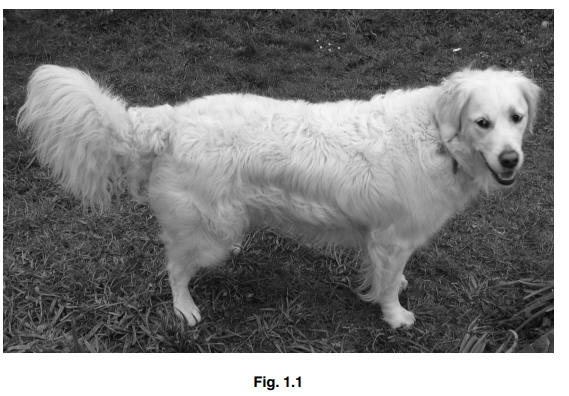
Explain how the principles of artificial selection would have been used to produce golden retrievers with the characteristics required for a guide dog.[4]
(b) The domestic dog, Canis familiaris, is found worldwide. It is able to breed with all other members of the genus to form fertile hybrids.
The distribution of some of the species belonging to the genus Canis is shown in Fig. 1.2.
The dingo and the grey wolf species have distinct ranges but the ranges of three species of jackal overlap in East Africa.
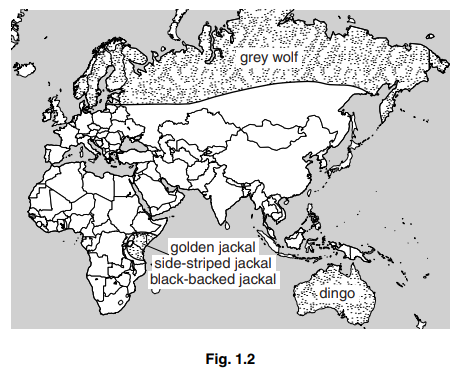
Table 1.1 shows whether members of different species of the genus Canis are able to breed with each other.
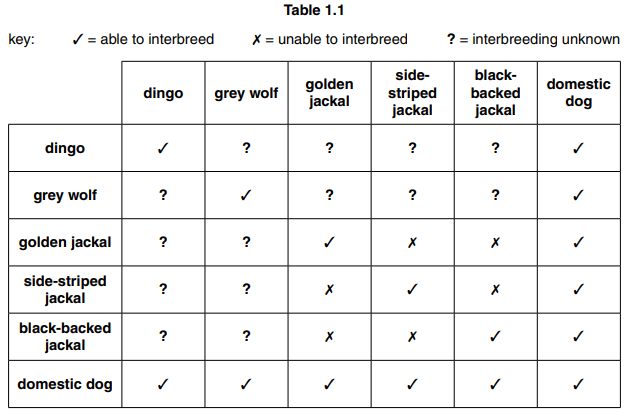
(i) Suggest the type of isolating mechanism preventing:[2]
- the three species of jackal interbreeding
- the dingo mating with all the other members of the genus Canis apart from the domestic dog.
(ii) Using the information in Fig. 1.2 and Table 1.1, state:[2]
- one reason why the members of the genus Canis could be described as one species
- one reason why they should be described as separate species.
[Total: 8]
Answer/Explanation
Ans:
1 (a) 1 (ideal characteristics) selected by humans/AW ;
2 one example of features ; e.g. calm temperament/obedient/intelligent
3 allowed to mate/bred together ;
4 offspring with ideal characteristics chosen to mate ;
5 over (many) generations ;
6 allele frequency (for ideal characteristics) increases ;
7 directional selection ;
(b) (i) jackal
behavioural/reproductive/AW ;
dingo
geographical/AW ;
(ii) one species
all breeds form fertile offspring with (domestic) dog ;
separate species
idea of different types of jackal do not interbreed (to produce fertile offspring) ;
Question
Mole rats, Spalax ehrenbergi, are mammals that live in groups in underground burrows. They are blind, and communicate with each other through sound and scent. Males make a purring call when they are attempting to persuade females to mate with them.
In Israel, the mole rats found in different parts of the country all look identical. However, there are actually four different populations with different chromosome numbers, which live in different climatic regions.
These are shown in Table 5.1.
This table also shows information about the purring calls used by the males in each population. The calls of the males were analysed by measuring the number of sound pulses per second, and also the frequencies of the sounds that they made.
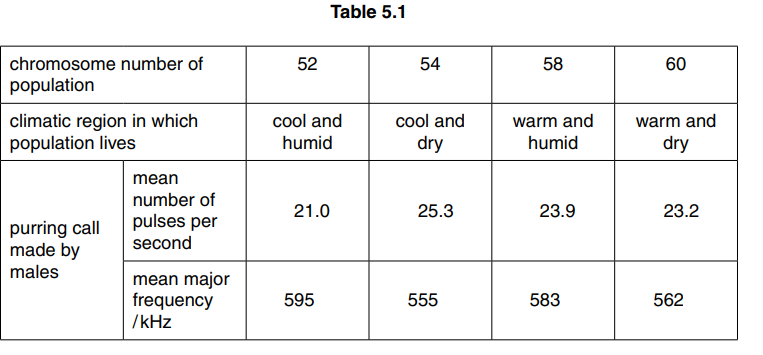
(a) Explain why the chromosome number of each of the four populations of mole rats is an even number.[2]
(b) Researchers investigated how female mole rats from each of the four populations responded to purring calls made by males from the same population, and by males from different populations.
A female was placed midway between two loudspeakers, and recorded calls from two males were played to her simultaneously. The researchers noted which loudspeaker the female moved towards. This was repeated with many different females from each
population. The results are shown in Table 5.2.
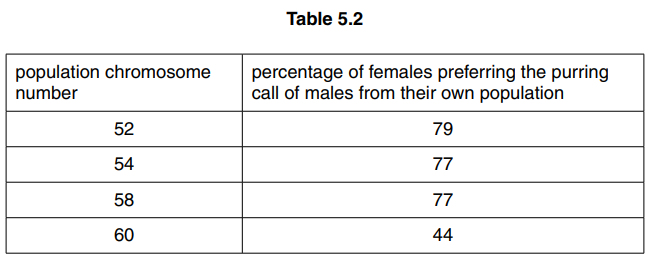
With reference to Table 5.2, describe the extent to which female mole rats show a preference for the purring calls of males from their own population.[2]
(c) With reference to the data in both Table 5.1 and Table 5.2, discuss whether these four populations of mole rats should be classified as different species.[4] [Total: 8]
Answer/Explanation
Ans:
5 (a) 1 two (complete) sets of chromosomes / diploid/ 2n ;
2 one of each chromosome, from each parent/ maternal and paternal ;
3 to allow (homologous) pairs to form during, meiosis / prophase 1/reduction division ;
(b) most/ high %/ more than 70%,
of females in three populations prefer calls from their own population ;
less than half/ 44%, of females in, one population/ population 60,
prefer calls from their own population ; ora
(c) yes
1 different chromosome numbers ;
2 cannot interbreed to form fertile offspring/ hybrids infertile ;
3 (because) not all chromosomes will be able to pair in meiosis ;
4 live in different, habitats / climatic regions
OR
geographical isolation ;
5 (so) unlikely to interbreed/reproductively isolated ;
6 most females prefer males from their own population ; ora
7 differences in mating, call/ behaviour ;
no
8 some females, willing to mate with/ prefer, males from other populations ;
9 phenotypically / morphologically, similar ;
Question
The blackcap, Sylvia atricapilla, is a small song bird. It is a summer visitor to parts of northern Europe, where it breeds.
Many blackcaps spend the winter (overwinter) in southern Europe, particularly in Spain. As a result of many people putting out food for birds in their gardens, some birds can survive the winter in the UK.
Scientists measured the genetic variation between blackcaps from two forest sites in Germany, 800 km apart. Both sites included birds that had overwintered in Spain and in the UK. The measurements were made shortly after the birds returned from their winter
feeding grounds.
(a) Explain how DNA sequencing can be used to measure the genetic variation of birds.[4]
(b) The measurements of genetic variation showed that:
- birds that overwinter in the same country (Spain or the UK) shared many alleles, even though they were living 800 km apart in Germany in the summer
- birds that overwintered in different countries (Spain or the UK) shared fewer alleles, even though they were living in the same forest in Germany in the summer
- the genetic differences between the birds that overwinter in Spain suggest that they no longer breed with those that overwinter in the UK.
Explain how these blackcaps could evolve into two distinct species.[4] [Total: 8]
Answer/Explanation
Ans:
3 (a) 1 DNA, denatured/ strands separated ;
2 ref. to adding primer ;
3 copies of genes /pieces of DNA, of different lengths produced ;
4 ref. to use of DNA polymerase ; A PCR
5 ref. to fluorescent dyes /radioactive probes ;
6 ref. to electrophoresis / detail ;
7 DNA/ base, sequence, read/ visualised ;
8 (DNA/ base sequence), can be compared ;
(b) 1 allopatric speciation ;
2 (due to) geographic isolation ;
3 different (winter), selection pressures / environments ;
4 sympatric speciation ;
5 (two) populations have different, features / behaviours ;
6 (two) populations do not interbreed/ mates within same population ;
7 ref. reproductive isolation ;
8 (over time populations) cannot breed (as different species) ;
9 AVP ; e.g. different mating calls / mutation
